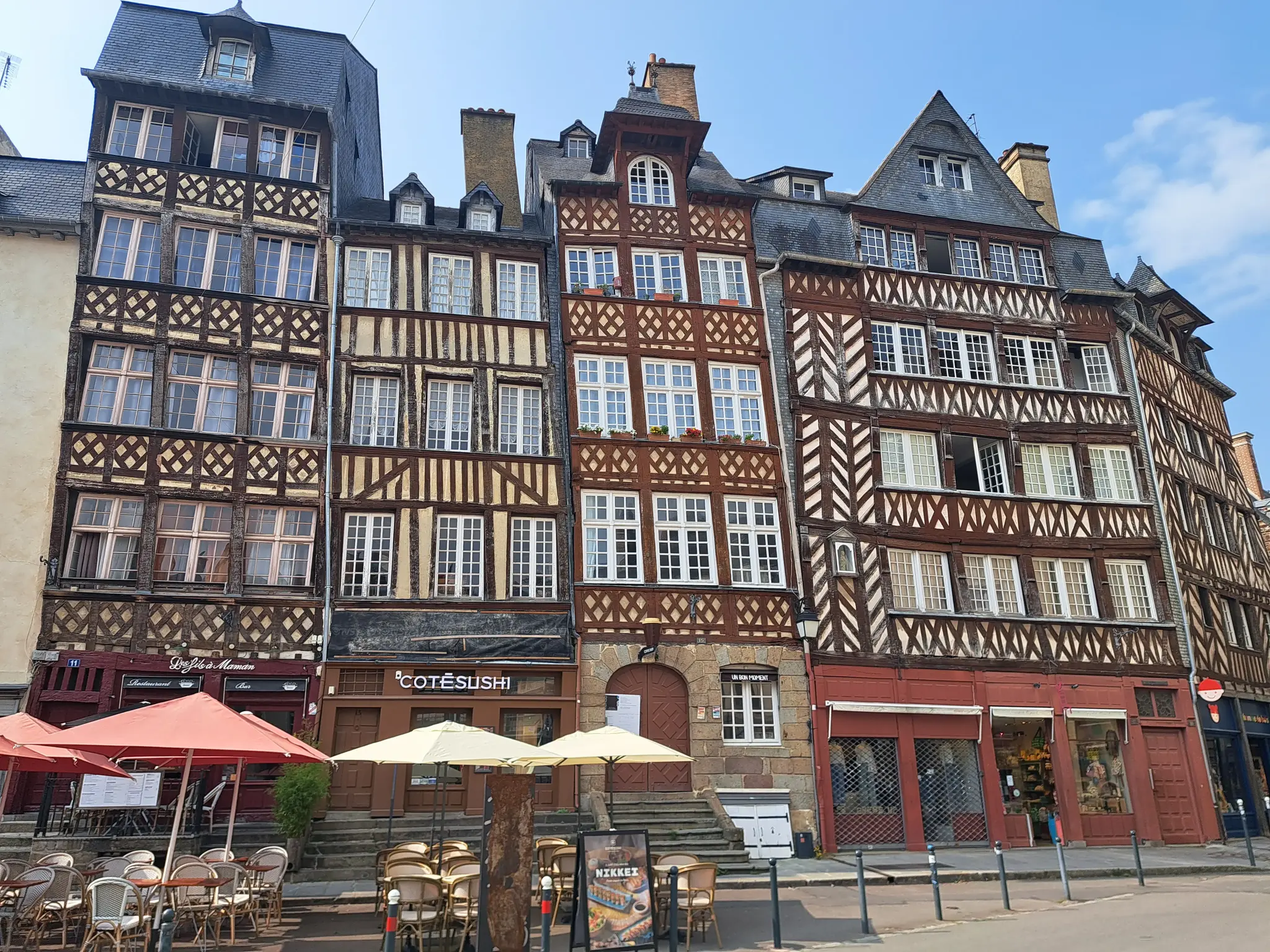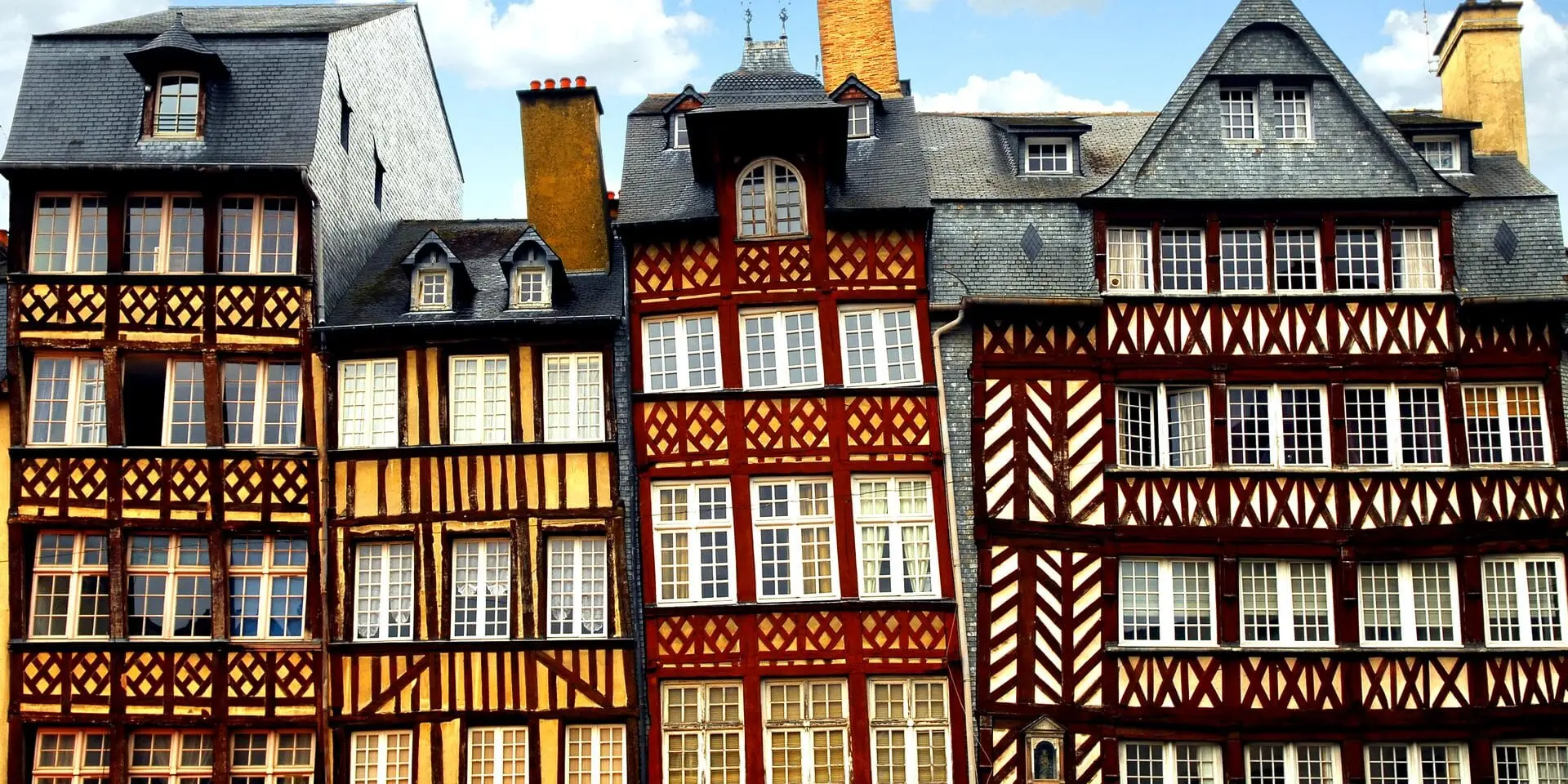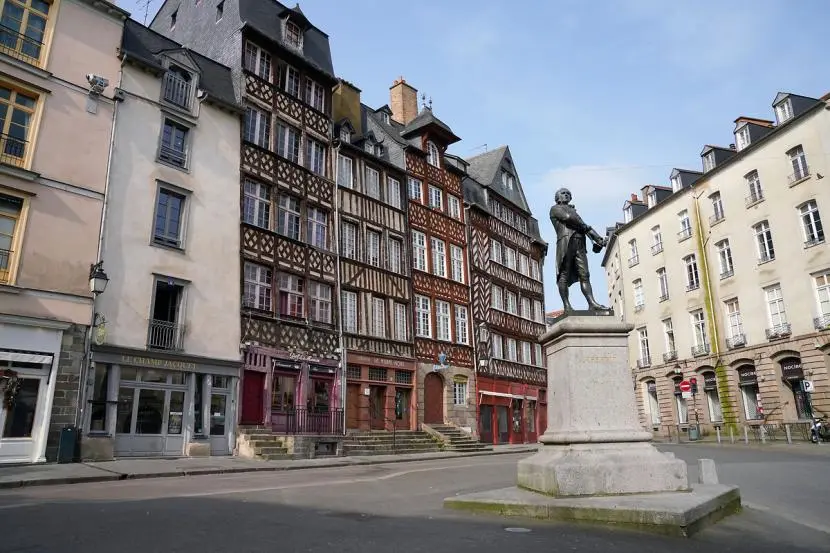- 🇩🇪 Deutsch
- 🇬🇧 English
- 🇪🇸 Español
- 🇫🇷 Français
- 🇮🇹 Italiano
- 🇵🇹 Português
- 🇨🇳 中文
50% off all Ciceru tours throughout October!Valid for the entire month of October when purchasing at least 2 tickets.
Get discount code
What Are the Secrets of Place du Champ Jacquet?
A Square in Rennes Where History Leans (Literally)
Place du Champ Jacquet: Where Time Wobbles and Leans
Medieval Houses That Lean But Never Fall

Place du Champ Jacquet isn't just some picturesque square in Rennes; it's like stepping into a giant, slightly tipsy time machine. Just take a look at the northern side—there, you'll find a lineup of ancient timber-framed houses that lean this way and that like they've had one too many. Built in the 17th century, these colorful, crooked facades were considered the height of solid construction back in their day. Hard to imagine, right? Nowadays, they look more like a medieval Jenga tower that's one piece away from toppling over.
These wonky houses have survived centuries of history, dodging disasters and outlasting trends. Their uneven charm makes them one of the square’s coolest features, like they're standing around whispering secrets from Rennes' medieval past. It's a real-life snapshot of an old Rennes that’s somehow still standing strong, despite appearances.
A Tale of Two Sides: The Fire Line That Changed Everything
Where the Great Fire of 1720 Left Its Mark

Now, here’s where things get even more interesting. The northern side of Place du Champ Jacquet looks like it's been pulled straight out of a fairy tale, but the southern side tells a much different story. In 1720, a fire ripped through Rennes with a vengeance, leaving a path of destruction in its wake. The blaze tore through the city, but when it reached Place du Champ Jacquet, it mysteriously stopped in its tracks. The northern side managed to escape, while the southern side wasn’t so lucky. You can actually see where the fire ended—the square itself acts as a kind of historical fire line, marking the boundary between survival and ruin.
Today, this stark divide is still visible: the northern side with its rickety, half-timbered houses that somehow survived the inferno, and the southern side rebuilt with solid stone structures after the fire. It’s like a split-screen view of Rennes before and after its brush with disaster. Place du Champ Jacquet stands as a living reminder of the city’s resilience, where the old and new blend to tell a tale of survival, loss, and rebirth.
The Statue of Defiance: Jean Leperdit, Rennes' Rebel Mayor
The Man Who Ripped Up a Death Sentence

And then there's the guy at the center of the square, holding up a torn piece of paper like he's just laid down the law. That’s Jean Leperdit, Rennes’ fearless mayor during the French Revolution—a period that started with dreams of liberty and equality but quickly spiraled into the Reign of Terror. By the time 1793 rolled around, things in France had gotten pretty grim. Guillotines were in full swing, and being labeled a traitor often meant a very short trip to the chopping block.
Leperdit, though, wasn’t just any mayor. He was a man of conviction who believed in the ideals of the revolution but drew the line at the bloodshed. His most legendary act? Tearing up a decree that called for the execution of 23 citizens of Rennes. It was a moment of pure defiance when standing up against the revolutionary government could have cost him his own life. But he did it anyway, saving lives and showing that even in the darkest times, there's room for courage and humanity.
The Square That’s Seen It All (and Still Stands Proud)
Where Quirks, History, and Defiance Collide

Place du Champ Jacquet isn’t just a square; it’s like the city’s history book that got left out in the rain a few times. You’ve got the medieval houses that lean and creak but refuse to go down without a fight, the stone buildings that proudly show they’re the new kids on the block (even if they’re a few centuries old now), and of course, Jean Leperdit striking his defiant pose like he's in the middle of a superhero movie.
The square is like a Renaissance painting mixed with a punk rock attitude—full of contrasts, quirks, and more than a few surprises. It's as if Rennes itself decided to take a stand right here, saying, 'Yeah, we've been through some stuff, but we're still here, looking as charmingly mismatched as ever.' Every inch of this place has something to say, whether it's the timber-framed houses gossiping about the Great Fire or the statue of Leperdit reminding everyone that sometimes you just have to rip things up and start again.
🍪 We use cookies to enhance your experience on our website. Here's how:
- Essential Cookies: these are necessary for our site to function properly and are always active.
- Optional Cookies: these allow us to monitor and improve our app's performance.
For more information, visit our Cookie Policy.
